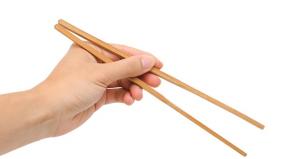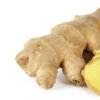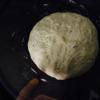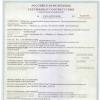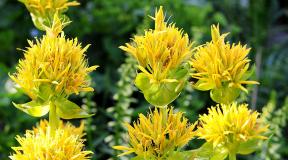Cocoa recipes are the drinks of kings. Why is it good to drink cocoa? Effect on the body
The legend says: a long time ago, a certain magician Quetzalcoatl lived in the Aztec land, who cultivated a magical garden, more amazing than which there was in the world. And Quetzalcoatl was so proud of his offspring that he imagined himself a creator, equal to the gods ... Of course, the gods could not do this, and as a punishment they deprived the proud man of his mind. The distraught Quetzalcoatl destroyed his garden, and only one magical tree survived - the cocoa tree. Of course, this is just a legend, but the fact that the scientific name of this tree (“cacao theobroma”) means “food of the gods” is the true truth.
A bit of history
The culture of cocoa cultivation originates in Mexico. Its former inhabitants, the Aztecs, used cocoa in the following way: they ground the fruits, added hot spices, sometimes honey, and prepared a fragrant drink called “chocolatl”. According to some reports, the famous Inca emperor Montezuma drank up to 50 bowls of “chocolatl” a day, which gave him extraordinary vigor, strength and energy. These qualities were so valued by the Aztecs that cocoa fruits were even used as a monetary unit. For example, 500 cocoa seeds could buy a slave. The Spanish conquistadors, who conquered Mexico in the 16th century, brought cocoa fruits to their king among other precious gifts and told how the Aztecs used them. For a long time chocolate remained the privilege of kings. Only after about 150 years did it become fashionable throughout Europe. And it remains popular today, although what we today call cocoa is very different from the Aztec "chocolatl".
What's good about cocoa?
In addition to the fact that cocoa is fragrant and pleasant to the taste, it is also very useful.
The alkaloid contained in it - theobromine, acts invigoratingly, but at the same time is somewhat milder than another well-known alkaloid - caffeine. Therefore, cocoa can be recommended to those who, for whatever reason, coffee is contraindicated. weakly affects the nervous and actively - on the cardiovascular and respiratory systems. So cocoa is very useful for certain diseases, such as bronchial asthma. It is also believed that all cocoa products protect teeth from the harmful effects of sugar.
American researchers have established an interesting fact: despite the fact that cocoa has more calories than tea or coffee, it does not lead to obesity. The fact is that even a small portion of cocoa causes a feeling of fullness, therefore, a person does not overeat.
Cocoa and chocolate are also useful for active mental or physical work, many call them an excellent antidepressant.
Let's drink cocoa!
Abroad they drink a lot of cocoa; however, they consume much more chocolate there than in our country. Maybe the reason is that the cocoa powder familiar to us since Soviet times did not dissolve well in water, it had to be boiled. Today on the Russian market there are imported brands of cocoa and chocolate drinks that dissolve even in cold water or milk. Russian producers are not far behind and produce new, improved cocoa brands.
Cocoa is best drunk from large wide cups with thick walls. It is believed that in this way you can enjoy the taste and aroma of cocoa to the highest degree. With biscuits or not very sweet. In the morning and afternoon - for cheerfulness, in the cold evening - to cheer up. If you want to sleep, you should not drink cocoa at night.
Cocoa powder is obtained from the finely ground pomace of the chocolate tree beans after the oil has been extracted from them. It serves as the basis for the preparation of a fragrant chocolate drink.
The Maya was considered a sacred drink by the Indians. It was drunk during important rituals. For example, when you get married. The scientific name for beans is Theobroma, which means "food of the gods" in Greek.
Is there any benefit in eating cocoa, what is useful for different categories of people? Let's discuss in our article!
How to choose a good product and check its quality
In stores you can find cocoa of two types:

- powder to be boiled;
- dry mix for quick preparation.
Natural powder is healthier. It does not contain sugar or preservatives.
When choosing, evaluate the fat content(on the package): it must be at least 15% in the product, expiration date.
The rest of the quality criteria can be assessed already from the purchased product. These include:
- The smell of chocolate. It should be strong and clean, without foreign inclusions.
- There should be no lumps. Their presence indicates improper storage.
- Grinding He is supposed to be very small. To assess the quality, you can rub the powder between your fingers. Good cocoa should stick to the skin, not crumble into dust.
- The color can only be brown.
Before cooking, it is advisable to taste a little of the product. A rancid or other unpleasant aftertaste indicates unsuitability for food.
REFERENCE! After preparing the drink, the suspension in the liquid should not settle before two minutes.
Composition and calories
The chemical composition of the product contains more than 300 organic substances.
The most significant among them:


-
theobromine, which causes a feeling of happiness and euphoria, but without addiction.
INTERESTING! Theobromine is added to a new generation of toothpastes, as it prevents the destruction of enamel and the development of caries.
- Theophylline, relaxing smooth muscles, normalizing respiratory function.
- Phenylethylamine relating to antidepressants.
- Caffeine, stimulating mental and physical activity. It belongs to psychostimulants, but the powder is contained in an amount not exceeding 2%.
- purine bases, involved in the synthesis of essential amino acids.
- Polyphenols acting as antioxidants.
Calorie content is about 300 kcal / 100 g of product.
Nutritional value and glycemic index
Sugar-free cocoa powder is a product with a low glycemic index of 20. This makes it suitable for the diet of patients and obesity.
Useful properties of the drink on water and milk
The product has a general strengthening effect on the body. It invigorates, uplifts, stimulates mental activity without exhausting the nervous system.

Fragrant hot drink is useful to drink in the cold season because it has a warming effect.
The product is capable of:
- stimulate the work of the lungs;
- activate the synthesis of hemoglobin due to the content;
- prevent caries;
- neutralize the harmful effects of ultraviolet radiation due to the natural melanin pigment included in the composition;
- prevent the development of cancer;
- normalize blood pressure;
It has antioxidant properties, surpassing and.
Cocoa boiled in water tastes like dark chocolate. It is recommended to drink it to people:
- prone to diarrhea
- hypotensive patients;
- allergic to lactose.
French nutritionist Madeleine Gesta recommends drinking a drink made with skim milk and honey. It maintains strength even during strict diets due to a balanced combination of trace elements and vitamins contained in the ingredients of the drink.
Cocoa in ordinary milk with or without added sugar is useful for people engaged in mental work. It satisfies hunger without burdening the stomach, stimulating the brain.
Effect on the body
The product is a source of endorphins, hormones of happiness. It acts gently, does not cause addiction and mood swings.
What is useful for adult men and women
In adults, with moderate constant use, it strengthens capillaries due to its flavonoids. Promotes healing of wounds, rejuvenation of the skin of the face and body.
It is useful for men to maintain reproductive function in good shape. and contained in the drink encourage the body to actively produce the male hormone - testosterone, improve the quality of the seminal fluid.
For women, cocoa is especially useful for hormonal disruptions. It balances the emotional state, softens the premenstrual syndrome.
Pregnant and lactating
Women in expectation of a child, doctors do not recommend the use of cocoa in any form., as it makes it difficult for the body to absorb the trace element calcium. But with severe toxicosis in the first trimester, drinking a drink in small quantities is allowed - twice a day, 50-100 ml. It relieves nausea, causes a surge of strength, preventing exhaustion.
During lactation, the product must be decisively abandoned. in order to avoid sleepless nights and violations of calcium metabolism in the baby.
Is it harmful for children
Children can drink cocoa from the age of three. It is better to accustom the child to a natural product with a minimum amount of sugar. It is necessary to introduce a drink into the diet carefully, in small portions, as it can cause allergies.
A delicious drink is especially useful for children after an illness, during exams to improve overall tone and mood.
For the elderly
With the onset of age-related changes in the human body, restructuring begins, which is accompanied by an emotional decline, despondency and depression.

Cocoa may support the elderly:
- activating the blood supply to the brain;
- improving memory;
- preventing the development of atherosclerosis;
- increasing the strength of the walls of blood vessels and capillaries;
- gently pulling me out of depression.
Special categories
They note the benefits of the product for those suffering from bronchial asthma. It relieves bronchospasm, making the patient feel better.
Potential danger and contraindications
Cocoa refers to products that can provoke allergic reactions.. The main contraindication is individual intolerance.

The product must also not be used:
REFERENCE! Despite the tonic effect, cocoa helps to normalize blood pressure to all those suffering from its fluctuations. It is desirable for hypotensive patients to drink it on the basis of water, and for hypertensive patients - milk.
The main suppliers of cocoa beans for powder production are African countries where chocolate trees are treated with pesticides and insecticides. All toxic substances are removed during the processing of beans at the stage of oil extraction.
But improper storage of raw materials before processing can harm. Therefore, it is better to purchase the product in large supermarkets from manufacturers worthy of your trust.
Since cocoa has energy properties, it is better to drink it in the morning to get a boost of energy for the whole day. A drink on water is combined with cheese or boiled, and on milk - with honey. Elderly and debilitated people can drink cocoa with milk during the day or early evening.
It is useful for athletes to drink cocoa in milk without sugar in small portions., 20-30 ml with an interval of 15 minutes, starting an hour after training. You can prepare a drink in advance and pour it into a thermos.
A safe daily dose of the drink is two cups of 200-250 ml. To prepare one serving, take 2 tsp. product.
ATTENTION! It is advisable for hypertensive patients to limit themselves to one cup of aromatic drink in the morning. Patients with bronchial asthma - on the contrary, you can drink 3 cups per day.
In cooking
Used for making chocolate sauces, pastries, icing, etc.
pancake sauce
Ingredients:

The legend says: a long time ago, a certain magician Quetzalcoatl lived in the Aztec land, who cultivated a magical garden, more amazing than which there was in the world. And Quetzalcoatl was so proud of his offspring that he imagined himself a creator, equal to the gods... Of course, the gods could not forgive this, and as a punishment they deprived the proud man of his mind. The distraught Quetzalcoatl destroyed his garden, and only one magic tree survived - the cocoa tree. Of course, this is just a legend, but the fact that the scientific name of this tree ("cacao theobroma") means "food of the gods" is the true truth.
A bit of history. The culture of cocoa cultivation originates in Mexico. Its former inhabitants, the Aztecs, used cocoa in the following way: they ground the fruits, added hot spices, sometimes honey, and prepared a fragrant drink called "chocolatl". According to some reports, the famous Inca emperor Montezuma drank up to 50 bowls of "chocolatl" a day, which gave him extraordinary vigor, strength and energy. These qualities were so valued by the Aztecs that cocoa fruits were even used as a monetary unit. For example, 500 cocoa seeds could buy a slave. The Spanish conquistadors, who conquered Mexico in the 16th century, brought cocoa fruits to their king among other precious gifts and told how the Aztecs used them. For a long time chocolate remained the privilege of kings. Only after about 150 years did it become fashionable throughout Europe. And it remains popular today, although what we call cocoa today is very different from the Aztec "chocolatl".
What's good about cocoa?
In addition to the fact that cocoa is fragrant and pleasant to the taste, it is also very useful.
American researchers have established a curious fact: despite the fact that cocoa is more nutritious than tea, or the fact is that even a small portion of cocoa causes a feeling of fullness, therefore, a person does not overeat.
Let's drink cocoa!
Despite all its wonderful qualities, cocoa is not very popular in Russia. Abroad, they drink it a lot; however, they consume much more chocolate there than in our country. Maybe the reason is that the cocoa powder familiar to us since Soviet times did not dissolve well in water, it had to be boiled. Today, imported brands of cocoa and chocolate drinks have appeared on the Russian market, which dissolve even in cold water or milk. Russian producers are trying to keep up and produce new, improved cocoa brands. It is possible that cocoa will again regain the sympathy of the majority of Russians.
How and when to drink it
From large wide cups with thick walls. It is believed that in this way you can enjoy the taste and aroma of cocoa to the highest degree. With biscuits or not very sweet cookies. In the morning and afternoon - for cheerfulness, in the cold evening - to cheer up. If you want to sleep, you should not drink cocoa at night.
Alexander Pasechny
Cocoa is not only aromatic and pleasant to the taste, it is also very useful. The alkaloid theobromine contained in it has a tonic effect, but softer than another known alkaloid - caffeine, and therefore cocoa can be recommended to those who, for whatever reason, coffee is contraindicated. Theobromine has little effect on the nervous system and actively on the cardiovascular and respiratory systems. So cocoa is very useful for diseases such as bronchial asthma. It is also believed that all cocoa products protect the teeth from the harmful effects of sugar.
Modern scientists have found that cocoa drink normalizes cholesterol levels in the body, maintains normal hematopoietic function, and helps heal wounds. According to the observations of doctors, a cup of hot cocoa is useful for sore throats and migraine attacks.
American researchers have established an interesting fact: despite the fact that cocoa has more calories than tea or coffee, it does not lead to obesity. The fact is that even a small portion of cocoa causes a feeling of fullness, therefore, a person does not overeat. Specialists especially recommend cocoa to children. Not every child is able to have a hearty breakfast; a cup of cocoa drunk in the morning allows you not to feel hungry for 2-3 hours - just before lunch at a big break.
Cocoa and chocolate are also useful for active mental or physical work, many call them an excellent antidepressant.
How to drink cocoa?
Cocoa is best drunk from large wide cups with thick walls. It is believed that in this way you can enjoy the taste and aroma of cocoa to the highest degree. Snacking cocoa is better with biscuits or not very sweet cookies. Drink this fragrant drink in the morning and afternoon - for cheerfulness, and on a cold evening - to cheer up. But if you want to sleep, you should not drink cocoa at night.
Cocoa is not recommended for increased acidity of the stomach, for violations of water-salt metabolism with a predisposition to urolithiasis. When using large doses of cocoa, digestion may be disturbed: the gastric mucosa is irritated, the urge to vomit occurs, and sometimes a skin rash. But all these phenomena quickly pass, as soon as you stop absorbing cocoa in excessive amounts. So remember that they do not drink a lot of cocoa.
Classic cocoa recipe
Mix 2 teaspoons of cocoa powder (or a little more to taste) with 2 teaspoons of sugar and a little hot water until smooth. Then pour it in a thin stream into boiling water or milk. Remove from heat after boiling. Everything - cocoa is ready, bon appetit.
Recipe "Gogol-mogul"
Cocoa - 25 g, egg yolks - 6 pieces, sugar - 180 g, orange peel - 1 hour. a spoon.
Raw egg yolks are ground with sugar, with finely chopped orange zest and cocoa. Then beat well. Served with biscuit cookies.
Ice cream recipe
Boil the cocoa and refrigerate it. Place a scoop of ice cream in each cup and top with cold cocoa. Ice cream is put into glasses or wine glasses before serving. When served with ice cream, cocoa can be prepared without milk. Cocoa with milk - 150 g, cream or milk ice cream - 50 g.
Cocoa with sour cream
In cups with cold cocoa, add sour cream whipped with a little sugar (50 g per serving).
"Elixir", recipe
Milk - 250 g, powdered sugar - 30 g, water - 60 g, cream - 40 g, ice.
Milk is boiled with sugar. Cocoa is ground with a small amount of water, then poured in a thin stream into hot milk. Mix everything, after 2-3 minutes filter and cool. Add ice cubes. Before serving, each glass is topped with whipped cream.
Cocoa tonic, recipe
Baked milk - 150 g, honey - 50 g, 2 egg yolks, butter (or cream - 20 g) - 10 g, cocoa - 30 g, vanilla.
The yolks are broken, honey and baked milk are added to them. Whisking constantly, add the rest of the ingredients.
The cocoa tree, native to the subequatorial regions of South America, is grown in the tropics of both hemispheres for its seeds, which are used in the confectionery industry and medicine.
In the pulp of the fruits of the cocoa tree are seeds - cocoa beans; usually there are 30-40 of them in one fruit. Cocoa beans by themselves do not have the chocolate flavor that we know. To obtain aromatic cocoa powder, cocoa beans are processed.
Cocoa contains less caffeine than coffee. It also contains such tonic substances as theophylline and theobromine, and the antidepressant phenylephamine.
Cocoa is rich in protein (12.9%), and the fatty acids that make up cocoa butter normalize blood cholesterol levels. Cocoa contains a lot of fiber and vitamins, including a large amount of folic acid (vitamin B9). Cocoa powder contains 10 to 22 percent fat.
For some mineral substances, cocoa powder can be called a champion, and for the content of iron and zinc, cocoa is a recognized leader among products.
Cocoa is good to eat for breakfast or for an afternoon snack. Cocoa powder and chocolate contain the natural pigment melanin, which is able to absorb heat rays and protect the skin from ultraviolet rays and infrared rays. Melanin gives foods that contain it a dark color. In addition to cocoa, melanin is found in black tea, coffee, blueberries, prunes, dark grapes.
Useful properties and taste qualities of cocoa have long been valued by gourmets. Its name - Theobroma, meaning "food of the gods" - was given to this plant by the famous naturalist Carl Linnaeus. The Spanish word "cocoa" was borrowed from the language of the Aztecs, it means "seed".
Cocoa powder is prepared from the roasted and shelled seeds of the cocoa tree after partial separation of the cocoa butter.
Cocoa can improve mood and increase vitality. This property is due to the presence in cocoa of substances that stimulate mental activity, improve mood, help to cope with depression, stimulating the production of the "hormone of joy" - endorphin.
Approximately 70% of the world's cocoa is produced in West Africa. The largest producers of cocoa beans are Ivory Coast and Ghana, which provide more than half of the world's supply of this product. Asian countries also grow this crop: Indonesia, Sri Lanka, Malaysia. In South America, cocoa beans are produced in Mexico, Ecuador, Brazil and Venezuela The Nordic countries are traditional consumers of cocoa.
cocoa flavor
The taste of the drink is pleasant, slightly oily, with a pleasant chocolate aroma. The taste of cocoa largely depends on the cocoa powder from which this drink was made.
The combination of cocoa with other products
The combination of cocoa powder with other products depends on the dish that is prepared using cocoa. Cocoa drink is prepared with milk or with the addition of milk or cream. For chocolate cookies or other pastries, the appropriate ingredients are used: flour, sugar, vanillin, butter. Any nuts and fruits can also be added to baking with cocoa powder.
The use of cocoa in cooking
Cocoa powder is used in the confectionery industry for the manufacture of chocolate and chocolates, as well as in the bakery and dairy industries. Desserts and chocolate drinks are prepared from cocoa.
Cocoa beans are used in pharmaceutical, perfume and cosmetic industries.
Features of making cocoa
In order for cocoa to turn out delicious, it is best to cook it not with water, but with milk, rubbing the lumps well or whisking with a whisk. The best temperature for dissolving cocoa in milk is 90°C, so it should not be boiled.
cocoa storage
Cocoa powder can be stored in a dry place for up to 12 months. Cocoa powder is hygroscopic, moisture may increase during storage, but according to the standard it should be no more than 7.5%.
Traditional role in dishes
Cocoa is traditionally the main ingredient for making chocolate, it is also used to make a hot drink and add it to desserts. In Mexico, meat sauce is made from cocoa and chili peppers.
Permissible Substitutions
Cocoa powder in dishes can be replaced with carob (carob), which looks little different from cocoa powder. The only difference is the shade of brown. The taste of carob is very similar to cocoa with sugar, i.e. it is much sweeter than cocoa and no sugar needs to be added to it.
Origin of cocoa
The cocoa tree is native to South America. According to archaeological excavations, it is known that as early as 400 BC. people living on the territory of modern Costa Rica grew cocoa trees and used cocoa beans for trade settlements. The Aztecs attached a sacred meaning to a drink called xocoatl (xocoatl) from cocoa beans, and cocoa beans themselves became a kind of currency in South America.
It is believed that Christopher Columbus was the first European who met with a chocolate drink in 1502 off the coast of what is now Honduras. At that time, no one appreciated the taste of this drink, but everyone noted its high price: for 100 grains you could buy a slave. Columbus took with him to Spain several bags of cocoa beans, but these bags were lost among the gold dishes and jewelry. As a result, the credit for the discovery of cocoa is attributed to Hernan Cortes, the conqueror of Mexico, who, 17 years after the return of Columbus, brought to the Spanish court a recipe for a chocolate drink received from the Aztecs and several chests of cocoa beans. This Aztec recipe contained pepper and cactus mash, but the Spaniards replaced them with sugar and milk.
The Spaniards tried to grow cocoa trees on their lands in the Dominican Republic, Trinidad and Haiti, but the Spanish Capuchin monks, who began growing cocoa in Ecuador in the 17th century, achieved more success. The Spaniards failed to keep the recipe of this drink a secret, and soon it spread among the European royal courts.
Europeans planted plantations of cocoa trees on their colonial lands, and by the middle of the 18th century, cocoa plantations were already producing quite a lot of products, and the price of cocoa beans began to decline. In the 19th century, starting from the 1820s, cocoa plantations appeared in Africa, and in Europe, its mass processing of cocoa beans and the production of chocolate began.
Influence on the human body, beneficial substances
Cocoa beans contain a large number of useful substances, only about 300. Serotonin, tryptophan and phenylethylamine have an antidepressant effect.
Cocoa products are useful for people suffering from hypertension, as they help lower blood pressure due to the content of polyphenols. Cocoa is rich in procyanidins, which relieve stress, increase skin tone and elasticity and protect it from aging.
Cocoa is useful in exhaustion, or after surgery. People with increased secretion of digestive juice should avoid this drink, as cocoa stimulates gastric secretion. Cocoa is not recommended for children under three years of age in order to preserve their nervous system and not disrupt the rhythm of the intestines. It should be remembered that cocoa can also cause allergies.
Cocoa contains caffeine and theobromine. As you know, caffeine has a strong stimulating effect on the nervous system and heart, and theobromine reduces spasms of the heart and brain. Theobromine helps to cope with coughing by weakening the cough reflex. When coughing, it is recommended to drink hot cocoa.
Cocoa - the cure for all diseases?
More recently, cocoa has been found to contain the substance epicatechin, which can reduce the incidence of four of the five most common diseases (stroke, myocardial infarction, cancer and diabetes) by almost 10%. Scholars differ on this issue.
Cocoa promotes wound healing
Scientists from the University of Munster have found a new substance in cocoa that promotes skin cell growth and wound healing, smoothes wrinkles and reduces the risk of stomach ulcers. The substance was named "cocoheal".
